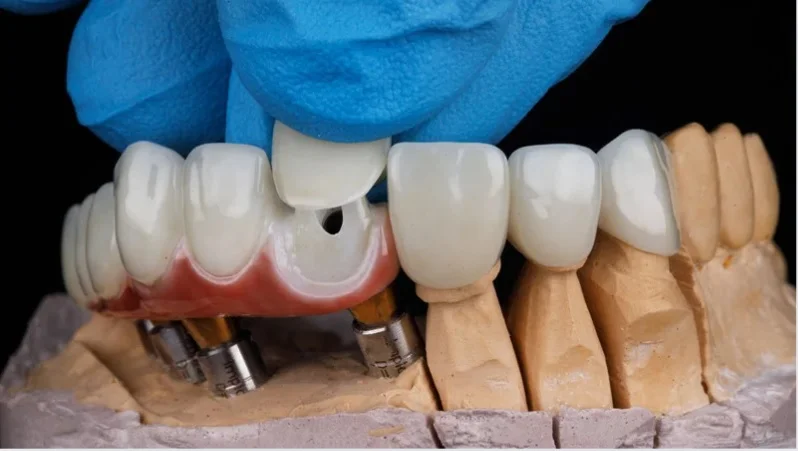Introduction
Selecting the best dental procedure can be difficult, particularly if you want to improve the appearance of your smile. Crowns vs veneers are two common choices, each with its benefits. Making an informed choice might be aided by your understanding of their distinctions. This article will compare the advantages, methods, expenses, longevity, and other aspects of veneers vs crowns in detail. By the end, You will know which choice would be ideal for your cosmetic objectives and dental requirements.
Understanding Veneers
Veneers are thin, precisely crafted shells that cover teeth’s front surfaces. Veneers, which are usually composed of porcelain or composite resin, are suitable for covering small flaws like chips, stains, or gaps. They are made to resemble your teeth in terms of size, color, and shape, giving your smile a consistent, attractive look. Veneers can close tiny gaps between teeth, improve the shape of old teeth, and conceal discoloration to completely change the appearance of your smile. They are a well-liked option for people who want to have a perfect, dazzling smile.
Benefits of Veneers
Veneers provide a natural-looking appearance by integrating perfectly with your original teeth. Compared to crowns, they are less invasive and preserve more of your original tooth structure. Additionally, stain-resistant, veneers are a long-lasting and visually beautiful choice. Veneers can last 10 to 15 years with good maintenance, giving you a long-term option for a gorgeous smile. Furthermore, veneers do not require special cleaning methods or instruments; all that is needed for upkeep is routine brushing and flossing. Because of this, veneers are a practical and appealing choice for lots of people.
Understanding Crowns
Caps, often called crowns, completely enclose a tooth. Usually, metal, porcelain, or a combination of the two are used to make them. Strong and protective crowns are frequently used to repair teeth that have deteriorated or been damaged. They are also used to strengthen the tooth and stop further fractures following root canal therapy. Many dental problems, such as fractured teeth, heavily worn teeth, and malformed or discolored teeth, can be fixed with crowns. They are a flexible treatment option since they provide complete coverage and support for teeth with structural issues.
Benefits of Crowns
Crowns are extremely strong and resistant to severe chewing forces. To stop additional decay or damage, they provide complete coverage for teeth that are damaged. Additionally, crowns can make teeth that are stained or malformed look better. For example, porcelain crowns can seamlessly fit in with your current smile because they are made to resemble real teeth. With the right maintenance, crowns can survive for many years—typically 10 to 15 years or more. They ensure that your smile stays both functional and aesthetically beautiful by offering a robust and sturdy treatment for teeth that have experienced significant damage or decay.
The Procedure: Veneers
Typically, receiving veneers requires two dental appointments. The dentist removes a tiny bit of enamel from the tooth during the initial appointment to prepare it. This process guarantees a natural-looking veneer that fits correctly. Following the taking of impressions, the veneers are custom-made in a dental facility to match your teeth. While the permanent veneers are being made, your teeth may be covered with temporary veneers. Using a unique adhesive, the veneers are affixed to the teeth during the second appointment. The dentist will adjust as needed to guarantee a flawless fit and a natural-looking appearance.
The Procedure: Crowns
A crown typically takes two to three visits to complete. First, the dentist cleans the tooth of decay and shapes it in preparation for the crown. To guarantee a good fit, this preparation could include extracting a sizable amount of the tooth structure. To preserve the tooth while the permanent crown is being produced, an impression is obtained and a temporary crown is positioned. When the permanent crown is completed, it is bonded with a powerful dental glue to the prepared tooth. To guarantee a natural appearance and comfortable fit, the dentist will make any required changes. From beginning to end, the full procedure may take several weeks.
Durability and Maintenance
Crowns vs veneers are both strong options, however, they don’t always last as long. When properly maintained, veneers can endure ten to fifteen years. They necessitate maintaining proper oral hygiene, which includes routine dental examinations, brushing, and flossing. The life of your veneers can also be extended by avoiding bad habits like grinding your teeth and biting on hard items. Conversely, crowns are made to survive even longer—typically, ten or fifteen years or longer. In comparison to veneers, they are also less prone to yellowing and staining. The integrity and aesthetics of veneers vs crowns must be maintained with routine dental checkups and proper oral hygiene.
Making the Right Choice
Choosing between veneers vs crowns depends on your specific dental needs. Veneers are suitable for minor cosmetic changes and can dramatically enhance the appearance of your smile. They are a great choice for those looking to address aesthetic concerns such as discoloration, chips, and gaps. Crowns, on the other hand, are better for extensive damage or decay and provide greater structural support for weakened teeth. Consulting with your dentist will help determine the best option for your smile. Your dentist can assess your oral health, discuss your goals, and recommend the most appropriate treatment based on your individual needs and preferences.
Conclusion
Veneers vs crowns are two different but equally effective ways to make your smile better. Making an informed decision might be aided by your understanding of their advantages and disparities. Either veneers or crowns can help you attain a beautiful, healthy smile because of their natural appearance low invasiveness and durability, and complete coverage, respectively. To select the course of action that best meets both your aesthetic and dental health objectives, always speak with your dentist. You can benefit from a gorgeous smile for many years to come with the correct maintenance and expert advice.
For more helpful information, click here.









